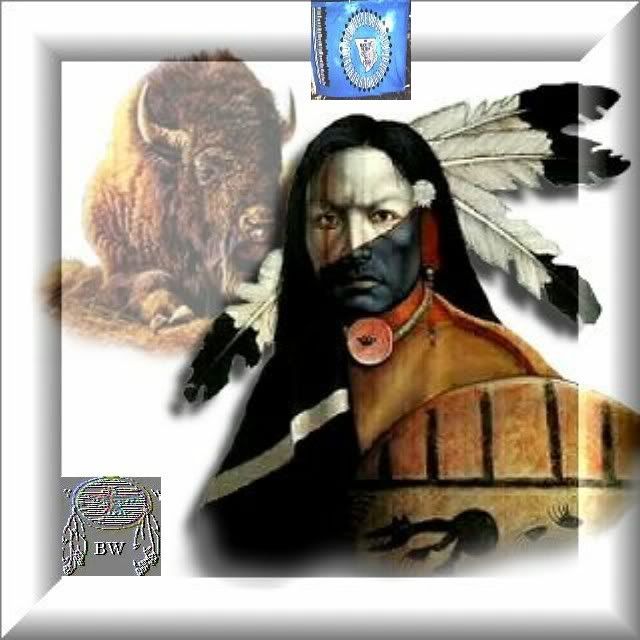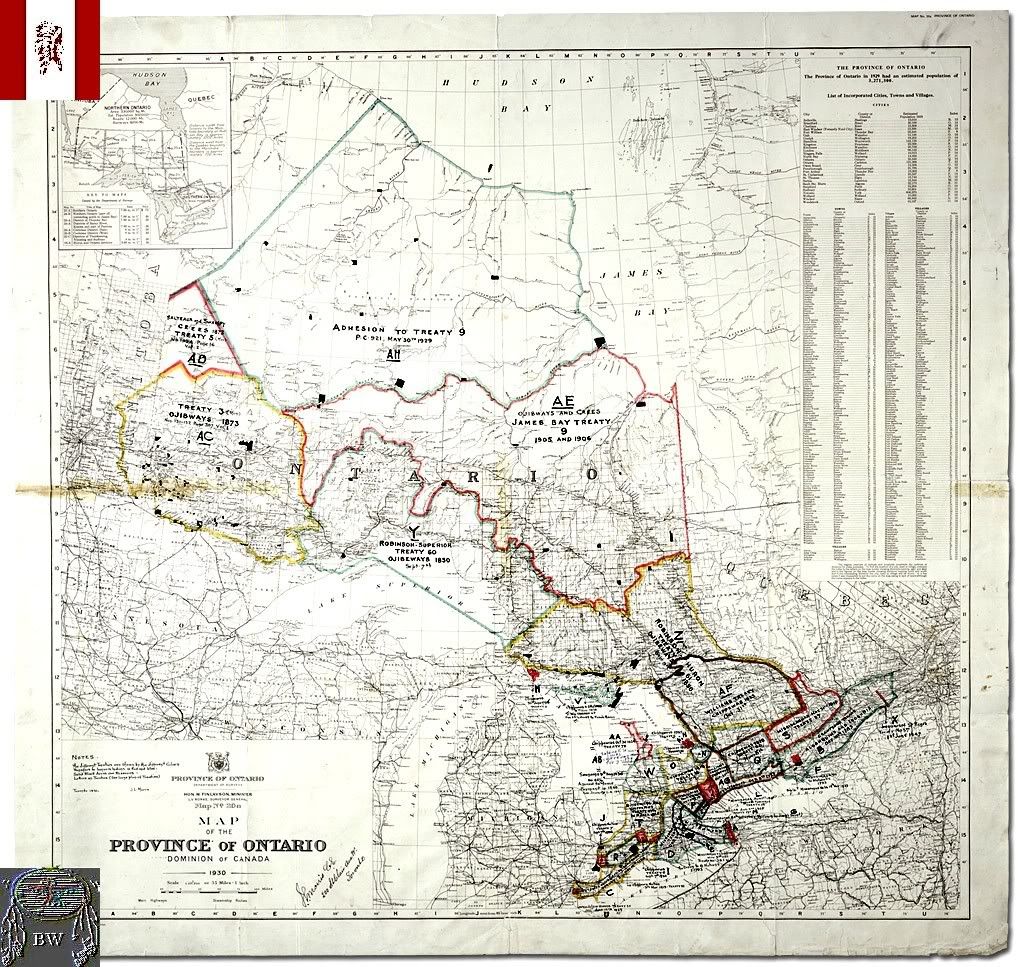|
BRAVEHORSE WARRIOR Sotaina
Blackfoot Warrior

 Chief Sotaina
Warrior Citation
SOTAI-NA (Sotenah; called Rainy Chief), a leading chieftain and warrior of the Blood tribe of the Blackfoot nation; b.c. 1809,
a member of the Mamyowi (Fish Eaters) band, probably in what is now southern Alberta; d. 1878 in the same area. As a young
man Sotai-na was known as Makoyiksiksinum (White Wolf), a name he received after a battle in which he killed a Crow of that
name. In this fight, Rainy Chief deliberately exposed himself to danger and, with a fellow chief, Peenaquim (Seen from Afar),
held off an enemy war party until his own followers could escape. Later Sotai-na became leader of a small family group of
Bloods which eventually was recognized as a band in its own right. It was named Isiso-kaas (usually translated Hair Shirts
but sometimes Robe Shirts or Robes with Hair on Outside) after a member of the band who wore a shirt made from the skin of
a buffalo calf from which the hair had not been removed. Sotai-na was also called Sowatsi-tapitowpi (Sitting on an Eagle Tail)
and was identified under this name by James Doty who met him in 1855. Doty was searching for Blackfoot members, who normally
hunted or traded on American territory, to sign a treaty with the American government. He described the chief as “a
good friend to the Whites” but “himself and people were very poor.” The chief usually traded at Hudson’s
Bay Company establishments and so did not become a party to the American treaty. At this time, Rainy Chief’s following
consisted of only 18 lodges; by 1870 this number had increased to 29 lodges and 348 people. Sotai-na’s band was always
poor, perhaps because he was on good terms with everyone and did not encourage the theft of horses, a source of wealth, from
enemy tribes.
Chief Sotaina
Warrior Citation
SOTAI-NA (Sotenah; called Rainy Chief), a leading chieftain and warrior of the Blood tribe of the Blackfoot nation; b.c. 1809,
a member of the Mamyowi (Fish Eaters) band, probably in what is now southern Alberta; d. 1878 in the same area. As a young
man Sotai-na was known as Makoyiksiksinum (White Wolf), a name he received after a battle in which he killed a Crow of that
name. In this fight, Rainy Chief deliberately exposed himself to danger and, with a fellow chief, Peenaquim (Seen from Afar),
held off an enemy war party until his own followers could escape. Later Sotai-na became leader of a small family group of
Bloods which eventually was recognized as a band in its own right. It was named Isiso-kaas (usually translated Hair Shirts
but sometimes Robe Shirts or Robes with Hair on Outside) after a member of the band who wore a shirt made from the skin of
a buffalo calf from which the hair had not been removed. Sotai-na was also called Sowatsi-tapitowpi (Sitting on an Eagle Tail)
and was identified under this name by James Doty who met him in 1855. Doty was searching for Blackfoot members, who normally
hunted or traded on American territory, to sign a treaty with the American government. He described the chief as “a
good friend to the Whites” but “himself and people were very poor.” The chief usually traded at Hudson’s
Bay Company establishments and so did not become a party to the American treaty. At this time, Rainy Chief’s following
consisted of only 18 lodges; by 1870 this number had increased to 29 lodges and 348 people. Sotai-na’s band was always
poor, perhaps because he was on good terms with everyone and did not encourage the theft of horses, a source of wealth, from
enemy tribes.
 In spite of the fact that he was recognized as a medicine man, Rainy Chief was one of the few leaders of the Blackfoot
nation to accept Christianity during the nomadic era. Most chiefs were hostile to missionary endeavours, but Rainy Chief became
a friend of the Oblate father Albert Lacombe (they first met around 1865) and believed he inherited supernatural powers from
the priest. The chief permitted three of his grandchildren to be baptized by Oblate priests in 1873–74 and allowed Father
Constantin Scollen to labour in his camp during the winter of 1876–77. Scollen observed that the chief was an “old
man who . . . did not leave me during a month of travels; his faith and simplicity were truly touching!” At a time when
the Blackfoot tribes were feared and distrusted by traders and missionaries, Rainy Chief maintained his friendship with the
white people. When the bands gathered to sign Treaty No. 7 with the Canadian government in 1877, Rainy Chief, whose winter
camp was now usually near the Red Deer River, was recognized by officials as the leader of all bands which camped in the northern
part of the Bloods’ hunting grounds. Only two head chiefs were selected from the Blood tribe, the young and dynamic
Mekaisto (Red Crow) for the south, and the older patriarch Rainy Chief for the north. The latter was chosen not only for his
friendly attitude towards the whites, but also because of the strength of his position within the tribe. By signing Treaty
No. 7, these Native Americans conceded their right to hunt in most of present-day southern Alberta. Rainy Chief was among
the first of the chiefs to sign but died before his people were settled upon the reserves it provided. Sotai-na was probably
buried on a high hill or in a scaffold on a tree, the usual Blackfoot custom. He had four children; his youngest son Apawakaasi
(White Antelope) became a minor chief of the band but was never as important as his father. From: historical accounts & records
In spite of the fact that he was recognized as a medicine man, Rainy Chief was one of the few leaders of the Blackfoot
nation to accept Christianity during the nomadic era. Most chiefs were hostile to missionary endeavours, but Rainy Chief became
a friend of the Oblate father Albert Lacombe (they first met around 1865) and believed he inherited supernatural powers from
the priest. The chief permitted three of his grandchildren to be baptized by Oblate priests in 1873–74 and allowed Father
Constantin Scollen to labour in his camp during the winter of 1876–77. Scollen observed that the chief was an “old
man who . . . did not leave me during a month of travels; his faith and simplicity were truly touching!” At a time when
the Blackfoot tribes were feared and distrusted by traders and missionaries, Rainy Chief maintained his friendship with the
white people. When the bands gathered to sign Treaty No. 7 with the Canadian government in 1877, Rainy Chief, whose winter
camp was now usually near the Red Deer River, was recognized by officials as the leader of all bands which camped in the northern
part of the Bloods’ hunting grounds. Only two head chiefs were selected from the Blood tribe, the young and dynamic
Mekaisto (Red Crow) for the south, and the older patriarch Rainy Chief for the north. The latter was chosen not only for his
friendly attitude towards the whites, but also because of the strength of his position within the tribe. By signing Treaty
No. 7, these Native Americans conceded their right to hunt in most of present-day southern Alberta. Rainy Chief was among
the first of the chiefs to sign but died before his people were settled upon the reserves it provided. Sotai-na was probably
buried on a high hill or in a scaffold on a tree, the usual Blackfoot custom. He had four children; his youngest son Apawakaasi
(White Antelope) became a minor chief of the band but was never as important as his father. From: historical accounts & records
|

